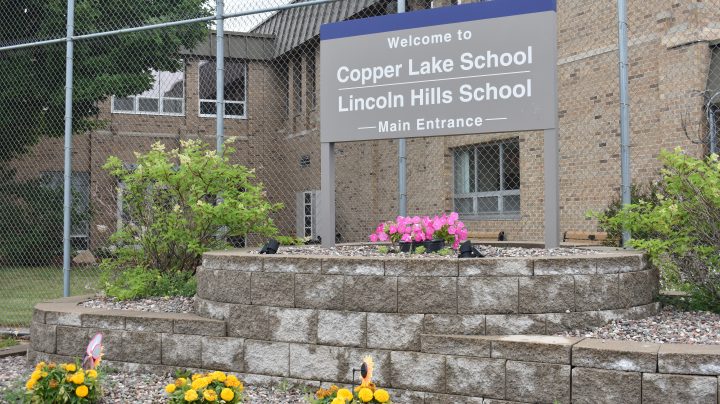
The struggle to treat kids at a juvenile justice facility

The number of kids in the juvenile justice system nationwide has dropped significantly over the last two decades, from more than 100,000 in the year 2000 to around 35,000. But states are finding it challenging — and expensive — to get housing and mental healthcare for the kids who remain in the system.
Like kids in the Lincoln Hills and Copper Lake schools, as they are known, that share a campus in a remote part of Wisconsin, about three-and-a-half hours north of Milwaukee.
The people held there are juveniles; their average age is 16 and some are as young as 14.
They’ve been sentenced to the facilities by a judge to live, go to school and receive mental health care all in one place. And while there are fewer kids now than a few years ago, extreme racial disparities remain; the majority of the kids are Black, though Native American kids are also over-represented.
These are children with high needs: Just about all of them have experienced trauma. A lot of them have been diagnosed with things like anxiety, depression and ADHD. They have trouble controlling their impulses, and it’s challenging to provide for all those needs.
Daniel Cohen, a psychologist, remembers how heavy his caseload was when he started working there in 2014.
“If you had to see all those clients a week, your entire day would be full of clients, every day, but you don’t have that much time,” he said.
He would have to see all of them, he said, “but some people would require once a week, and you only had so much time, so you’d, like, triage. So you might be able to see them every other week or once a month with urgent check-ins.”
Cohen left in 2016. While he was there, he said the care mostly ended up being nothing more than crisis intervention. Conditions got so bad that the legislature voted to close down the facilities. As of now, they remain open.
Tracy Johnson, who oversees mental health care there now, said these days, treatment starts as soon as kids arrive on site. “We assign them a clinician, so that psychology staff member will follow them throughout their stay at that facility.”
Johnson said 16 staff members offer individual therapy, group therapy and crisis management, among other services — which is one reason it’s so expensive to keep kids there. The current budget is $1,154 a day, per child.
The drop in the populations of Lincoln Hills and Copper Lake is good news for juvenile justice reform, but it makes the current system much more expensive. The two facilities combined have space for more than 500 kids.
Today there are fewer than 50 there, with just 38 boys and 10 girls. But the fixed costs — from security staff to heating — all stay the same. Next year, the price per kid is expected to go up to $1,178.
Lincoln Hills and Copper Lake have been the subject of numerous investigations, including by the Department of Justice, though ultimately no criminal charges were filed. There have also been lawsuits over things like physical abuse and excessive use of solitary confinement.
The ACLU of Wisconsin and Juvenile Law Center filed a lawsuit in 2017. Now, there’s a federally appointed monitor, and conditions have reportedly been getting better.
“Chief among these [improvements] are the elimination of pepper spray, the near elimination of strip searches of young people, reductions in the use of solitary confinement and improvements to the physical plant,” said Kate Burdick, a senior attorney at the Juvenile Law Center.
But Burdick said the kids still report that “they often don’t have much to do, they’re bored.” And, she said: “They’re disconnected from their families, there is inadequate programming. At the end of the day, it’s really not a healthy place for them to be growing up.”
The question is where the kids should go instead. Most of the kids held at Lincoln Hills and Copper Lake are from Milwaukee, meaning they’re currently more than 200 miles from home.
Current plans call for building new facilities that would let them get the care they need closer to home. In her most recent report, the monitor emphasized that plans need to move forward soon.
For now, those plans are still being negotiated — which means any new construction is likely years away.
There’s a lot happening in the world. Through it all, Marketplace is here for you.
You rely on Marketplace to break down the world’s events and tell you how it affects you in a fact-based, approachable way. We rely on your financial support to keep making that possible.
Your donation today powers the independent journalism that you rely on. For just $5/month, you can help sustain Marketplace so we can keep reporting on the things that matter to you.

















